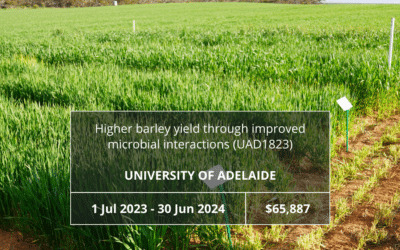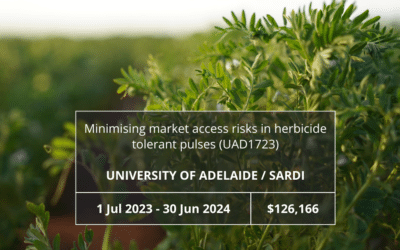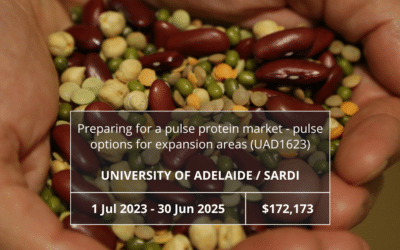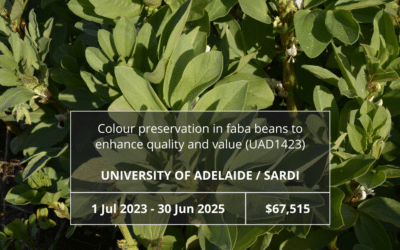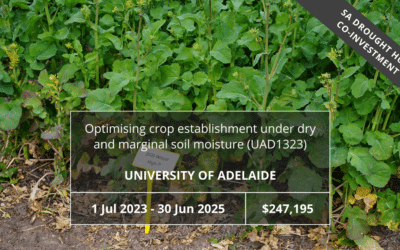The aims of this project are to determine whether Australian barley varieties differ in their effects on the diversity of potentially beneficial soil microbes in the field, and to investigate the genetic control of any observed differences. This will result in growers being able to choose varieties that will benefit soil biological health and provide new molecular tools for breeders to use in selection to develop new varieties with improved soil biological health.
Articles Posted by Bridget Penna
Minimising market access risks in herbicide tolerant pulses (UAD1723)
Nov 23, 2023 | Current Projects
This project will be undertaken by SARDI researchers and aims to exploit natural genetic variation in herbicide metabolism ability to reduce the market access risks associated with chemical residues in herbicide tolerant pulse grain. This project will identify variation in the ability of lentil and faba bean genotypes to metabolise metribuzin and investigate whether herbicide residues are retained or reduced in plant-based protein extraction processes.
Preparing for a pulse protein market – pulse options for expansion areas (UAD1623)
Nov 23, 2023 | Current Projects
This project will be undertaken by SARDI researchers and aims to provide information to growers when considering a pulse protein market in key pulse expansion areas. This will be achieved by evaluating current genetic variation for protein content and seed quality, evaluating the crop choices for different environments, and by conducting an economic analysis.
Colour preservation in faba beans to enhance quality and value (UAD1423)
Nov 23, 2023 | Current Projects
Seed colour is an important quality trait required to meet the highest value export markets for faba bean, with consumers demanding a pale tan colour. Faba beans darken on storage, and storage temperature and moisture both affect this process. This project will be undertaken by SARDI researchers and has three aims: to determine what chemical mechanism is behind the darkening process; to find a low-cost post-harvest treatment able to slow down the darkening; and to look for varietal differences in storage darkening.
Optimising crop establishment under dry and marginal soil moisture (UAD1323)
Nov 23, 2023 | Current Projects
The aim of this project is to improve the effectiveness of dry sowing focusing on wheat and canola. It will conduct experiments at three sites with different rainfalls and soils to examine the effect of sowing practices on establishment at a range of sowing times. The project will explore the ability of remote sensing to measure seedbed moisture content to aid decision making. Controlled environment studies on emergence in different soils and moisture contents will support the field studies.
Latest Media
- 2024 Farm Gross Margin Guide
- SAGIT invites applications for 2024 funding round
- Developing a DGT methodology to assess bioavailability of herbicide residues (USA121)
- Pesticide effects on soil microbial functions in contrasting SA soils (USA3323)
- Canola profitability as a break crop in the Upper North (UNF2822)

